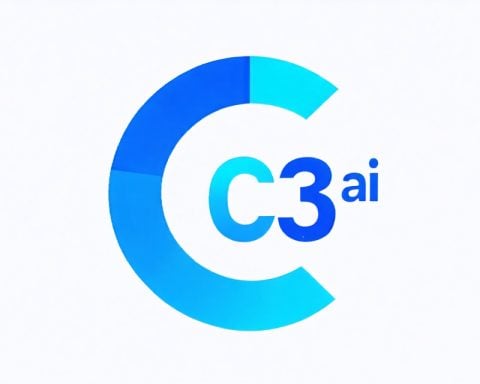Nvidia’s stock performance has become the talk of the tech world, with an impressive increase of over 180% in the current year, driven by surging demand for its powerful GPUs. These devices are crucial for accelerating artificial intelligence processes, catapulting Nvidia to new heights in the stock market. However, questions linger about whether this growth can sustain itself—and if the stock might fall dramatically.
Valuation Concerns and Market Volatility
Currently trading at over 80 times its trailing earnings, Nvidia’s valuation is undoubtedly high. This pricing anticipates continued demand and profitability as artificial intelligence remains a hot topic. Yet, speculative elements of the market may assume these conditions will remain perfect, neglecting potential risks. The volatile global economic environment introduces uncertainties that may affect high-growth tech stocks like Nvidia.
Impressive Gains Amid Roller-Coaster Performance
Nvidia’s stock exploded from about $13 in early 2021 to approximately $140 today, far surpassing the S&P 500’s gains over the same period. However, it hasn’t all been smooth sailing; 2021 saw a 125% rise, followed by a 50% drop in 2022, only to skyrocket by 239% in 2023. This highlights the stock’s unpredictable nature compared to steadier portfolios like Trefis’ High Quality Portfolio.
Future Growth and Challenges
While Nvidia’s revenue nearly tripled following widespread AI adoption, growth could decelerate. With the industry reaching a plateau, investments may not yield substantial returns, potentially slowing Nvidia’s expansion. Additionally, logistical setbacks and heavy reliance on Taiwan Semiconductor Manufacturing Company pose risks to Nvidia’s ambitious annual chip release schedule.
Despite a projected revenue doubling to $126 billion, a slowdown to 15% growth over the next two years would mean a more conservative future outlook. As Nvidia continues to navigate these challenges, some investors may question whether the current valuation justifies the risks.
Nvidia’s GPU Dominance: A Double-Edged Sword for Tech Innovation
Nvidia’s rise through the tech echelons is truly remarkable, yet it presents a curious case of both boom and caution. Beyond the dazzling stock performance, Nvidia’s trajectory casts light on the profoundly transformative—and potentially disruptive—roles its technologies play globally.
Impact on Gaming and Cryptocurrency
For gamers, Nvidia’s GPUs symbolize the pinnacle of immersive technology, pushing the boundaries of virtual reality and real-time ray tracing. Yet, the proliferation of these GPUs isn’t without controversy. The gaming community has faced product shortages and price hikes, due partly to crypto miners gobbling up GPUs to mint cryptocurrencies. This siphoning has sparked outcry among gamers, retailers, and even regulators, as supply chain constraints and inflated costs continue to vex the industry.
Environmental Concerns: A Tech Giant’s Carbon Footprint
The environmental footprint of AI and cryptocurrency mining is a growing concern attached to Nvidia’s hardware. GPUs require colossal energy to process AI models or mine digital coins, significantly contributing to increased carbon emissions. Policymakers are scrutinizing these sectors, weighing regulations to ensure sustainable tech advances. This raises a pressing question: Can Nvidia’s innovations proceed without undermining environmental integrity?
Balancing Global Dependencies
A significant portion of Nvidia’s chip production hinges upon Taiwan Semiconductor Manufacturing Company (TSMC). Given geopolitical tensions, especially concerning Taiwan, this dependency exposes Nvidia to risks that extend beyond market fluctuations. Should global tensions escalate, Nvidia’s supply chain might be disrupted, affecting product availability and pricing worldwide. Thus, diversification—or lack thereof—remains a crucial strategic consideration.
The Dual Faces of AI
While Nvidia’s contributions to AI are lauded for accelerating developments in healthcare, autonomous vehicles, and defense, they also elicit ethical debates. AI powered by Nvidia’s chips has sparked controversies around privacy, job displacement, and even military applications. Societies face a dilemma: how to leverage AI’s capabilities while upholding ethical norms and privacy rights.
Prospects and Puzzles
Navigating Nvidia’s future involves contemplating a volatile mix of innovation-driven growth and the sobering specter of market corrections. Could Nvidia’s tech hegemony face regulatory pushback or evolve sustainably to maintain momentum?
Diving deeper into these dynamics, it’s evident that Nvidia’s journey is not just about financial gains, but encapsulates broader societal questions. In the quest for advancement, how do communities and industries adapt to rapid tech evolution? And crucially, what responsibilities should corporations like Nvidia shoulder in championing ethical tech worldwide?
For more updates on Nvidia and tech advancements, visit nvidia.com.



















